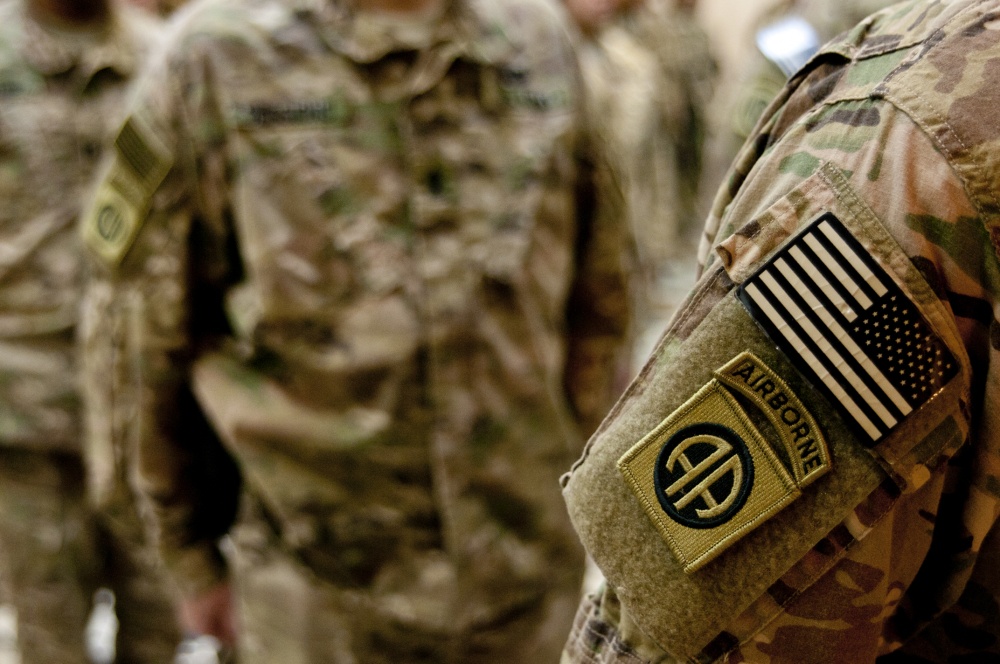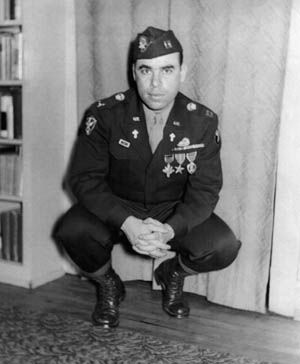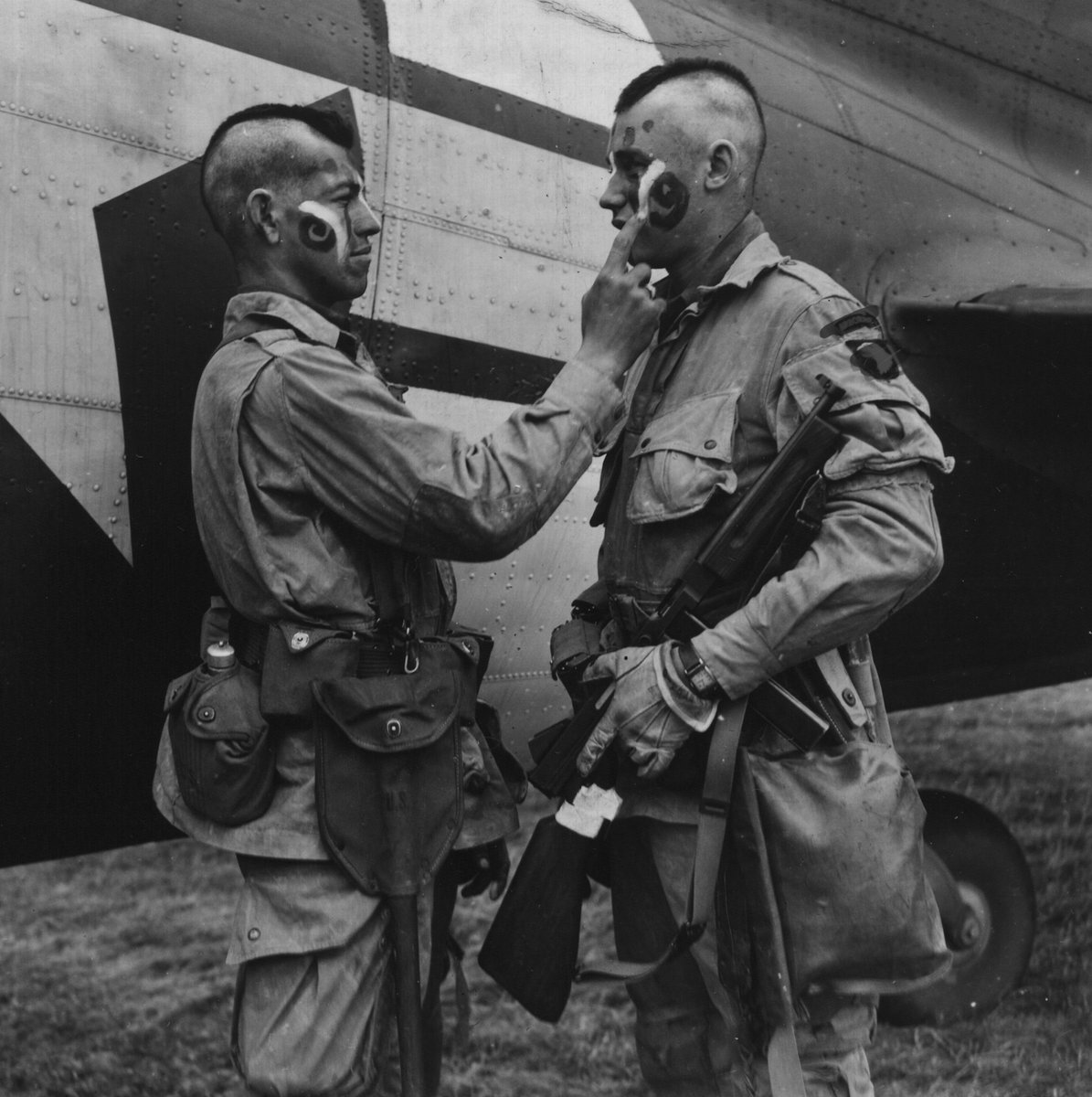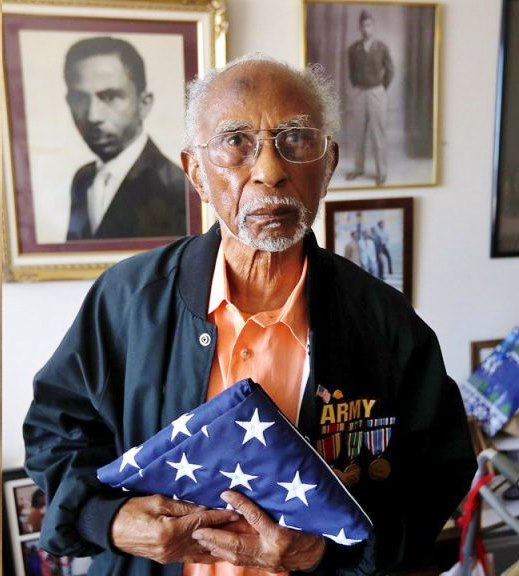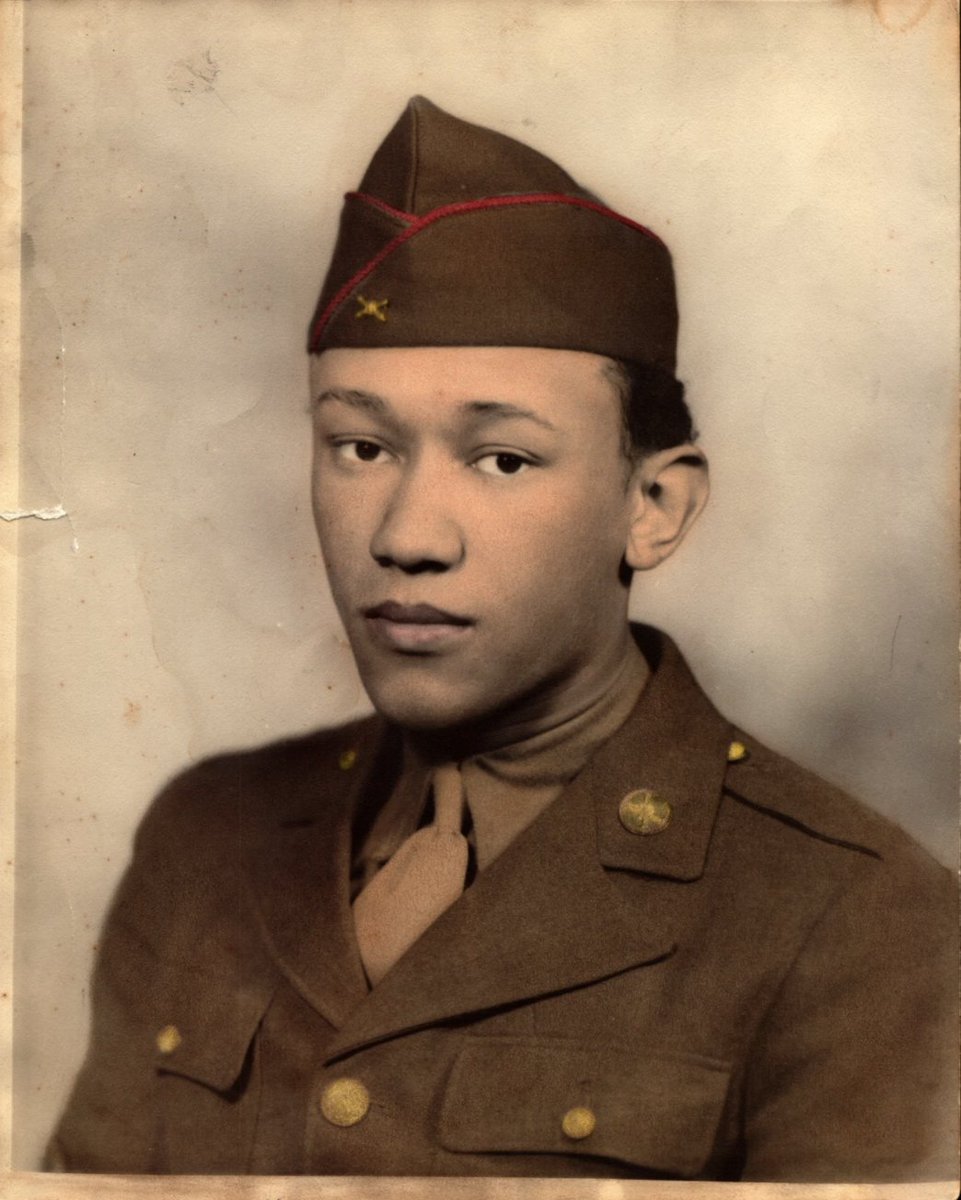
[1 of 18]
We'll start Day 4 of 18th Airborne Corps Patch Week™️ with the most anticipated patch of the series.
You see, the patch of the 101st Airborne Division is perhaps the most recognized in the entire US military.
We'll start Day 4 of 18th Airborne Corps Patch Week™️ with the most anticipated patch of the series.
You see, the patch of the 101st Airborne Division is perhaps the most recognized in the entire US military.

[2 of 18]
The Screaming Eagle is visible in some of the most iconic American films, TV shows, and documentaries about WWII and Vietnam.
The Screaming Eagle is visible in some of the most iconic American films, TV shows, and documentaries about WWII and Vietnam.

[3 of 18]
Many of those who wear it, however, do not know the full breadth of its history.
So, let's tell that history now.
Many of those who wear it, however, do not know the full breadth of its history.
So, let's tell that history now.

[4 of 18]
The story of the 101s patch starts with this man.
In 1861 American Indian Ahgamahwegezhig ("Chief Sky") of the Chippewa tribe, cut down a tree in Jim Falls, Wisconsin, to capture two American Bald Eaglets in their nest. One of the two survived.
The story of the 101s patch starts with this man.
In 1861 American Indian Ahgamahwegezhig ("Chief Sky") of the Chippewa tribe, cut down a tree in Jim Falls, Wisconsin, to capture two American Bald Eaglets in their nest. One of the two survived.

[5 of 18]
Later that year, while on a trading expedition, Chief Sky stopped in a tavern at Eagle Point, Wisconsin, where he met this man, Daniel McCann, who'd built and owned the tavern.
Chief Sky displayed the eaglet to McCann who bought it for a bushel of 🌽.
Later that year, while on a trading expedition, Chief Sky stopped in a tavern at Eagle Point, Wisconsin, where he met this man, Daniel McCann, who'd built and owned the tavern.
Chief Sky displayed the eaglet to McCann who bought it for a bushel of 🌽.

[6 of 18]
It's unclear why McCann purchased the bird (a bushel of corn was a significant expenditure for him). He kept it as a family pet. Caged inside a modified oaken cask, the bird grew larger and quickly became too expensive to feed.
McCann had to get rid of the eagle.
It's unclear why McCann purchased the bird (a bushel of corn was a significant expenditure for him). He kept it as a family pet. Caged inside a modified oaken cask, the bird grew larger and quickly became too expensive to feed.
McCann had to get rid of the eagle.

[7 of 18]
McCann sold the eagle for $2.50 to Capt. John Perkins, commanding officer of an Eau Claire, Wisconsin militia company passing through the area.
John's militia unit assumed the bird as its mascot. John loved the bird so much he named the unit the Eau Claire Eagle.
McCann sold the eagle for $2.50 to Capt. John Perkins, commanding officer of an Eau Claire, Wisconsin militia company passing through the area.
John's militia unit assumed the bird as its mascot. John loved the bird so much he named the unit the Eau Claire Eagle.

[8 of 18]
Perkins' unit was mustered into federal service for the Civil War in support of the Union Army in September, 1861, and was re-designated as Company C, 8th Wisconsin Volunteer Infantry Regiment.
Perkins' unit was mustered into federal service for the Civil War in support of the Union Army in September, 1861, and was re-designated as Company C, 8th Wisconsin Volunteer Infantry Regiment.

[9 of 18]
The eagle mascot was adopted by the new 8th Wisconsin Volunteer Infantry Regiment. Proud of its mascot, the unit assumed the nicknamed the Eagle Regiment. The mascot was named Old Abe, in honor of Abraham Lincoln.
Old Abe went everywhere the 8th Wisconsin went.
The eagle mascot was adopted by the new 8th Wisconsin Volunteer Infantry Regiment. Proud of its mascot, the unit assumed the nicknamed the Eagle Regiment. The mascot was named Old Abe, in honor of Abraham Lincoln.
Old Abe went everywhere the 8th Wisconsin went.

[10 of 18]
In Madison, Wisconsin, a special shield-shaped perch based on the American Flag was created to carry Old Abe into battle.
For men of the 8th Wisconsin, Old Abe was an inspirational symbol of calm ferocity.
In Madison, Wisconsin, a special shield-shaped perch based on the American Flag was created to carry Old Abe into battle.
For men of the 8th Wisconsin, Old Abe was an inspirational symbol of calm ferocity.

[11 of 18]
October, 1862, Battle of Corinth, Mississippi, Confederate General Sterling Price: "that bird must be captured or killed at all hazards, I would rather get that eagle than capture a whole brigade or a dozen battle flags."
The 8th Wisconsin let no harm come to Old Abe
October, 1862, Battle of Corinth, Mississippi, Confederate General Sterling Price: "that bird must be captured or killed at all hazards, I would rather get that eagle than capture a whole brigade or a dozen battle flags."
The 8th Wisconsin let no harm come to Old Abe

[12 of 18]
After the enlistments of the men of the 8th Volunteer expired and the unit deactivated, the troops presented Old Abe to Wisconsin Governor James Lewis as a gift to the people of the state.
After the enlistments of the men of the 8th Volunteer expired and the unit deactivated, the troops presented Old Abe to Wisconsin Governor James Lewis as a gift to the people of the state.

[13 of 18]
Old Abe lived out the remainder of his life in the Wisconsin Capitol building. In 1881, a fire broke out in
a nearby storage building.
A month later Old Abe, weakened by fumes, died in the arms of his handler, the man in this image, George Gilles.
Old Abe lived out the remainder of his life in the Wisconsin Capitol building. In 1881, a fire broke out in
a nearby storage building.
A month later Old Abe, weakened by fumes, died in the arms of his handler, the man in this image, George Gilles.

[14 of 18]
Smash cut to 40 years later: 1921, the US War Department raises a 101st Division in Milwaukee, Wisconsin in the Organized Reserves [no lineal tie to the 101st Division briefly raised for WWI].
That 101st Division assumes the nickname The Screaming Eagle after Old Abe
Smash cut to 40 years later: 1921, the US War Department raises a 101st Division in Milwaukee, Wisconsin in the Organized Reserves [no lineal tie to the 101st Division briefly raised for WWI].
That 101st Division assumes the nickname The Screaming Eagle after Old Abe

[15 of 18]
This is the patch of that 101st Division (it's Old Abe rising from the 1881 fire in the state Capitol).
The 101st Division deactivated in 1924.
This is the patch of that 101st Division (it's Old Abe rising from the 1881 fire in the state Capitol).
The 101st Division deactivated in 1924.

[16 of 18]
In 1942, when the 101st Airborne Division formed on Camp Claiborne, Louisiana, it's first commander, legendary parachutist Bill Lee, assumed the Screaming Eagle nickname [he pluralized it: "Screaming Eagles"] and a form of the Old Abe patch.
In 1942, when the 101st Airborne Division formed on Camp Claiborne, Louisiana, it's first commander, legendary parachutist Bill Lee, assumed the Screaming Eagle nickname [he pluralized it: "Screaming Eagles"] and a form of the Old Abe patch.

[17 of 18]
For some reason that is lost to history, however, Bill Lee refused to carry forward the lineage of the Wisconsin-based 101st Division. [As a result, there is no lineal tie between the current 101st and the 1921 101st]
For some reason that is lost to history, however, Bill Lee refused to carry forward the lineage of the Wisconsin-based 101st Division. [As a result, there is no lineal tie between the current 101st and the 1921 101st]

[END]
Nonetheless, the spirit of Wisconsin lives on through the shoulder sleeve insignia, perhaps the most esteemed unit patch in all the world.
Nonetheless, the spirit of Wisconsin lives on through the shoulder sleeve insignia, perhaps the most esteemed unit patch in all the world.

• • •
Missing some Tweet in this thread? You can try to
force a refresh


